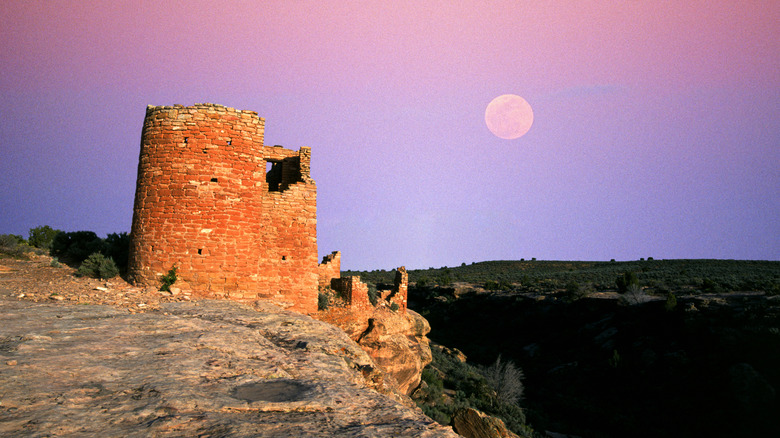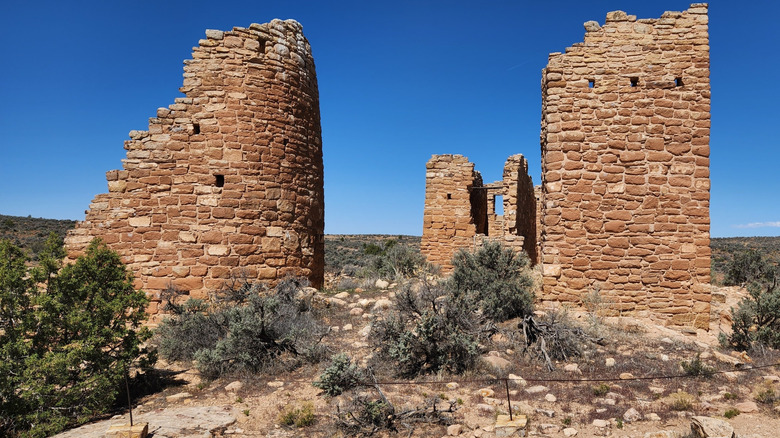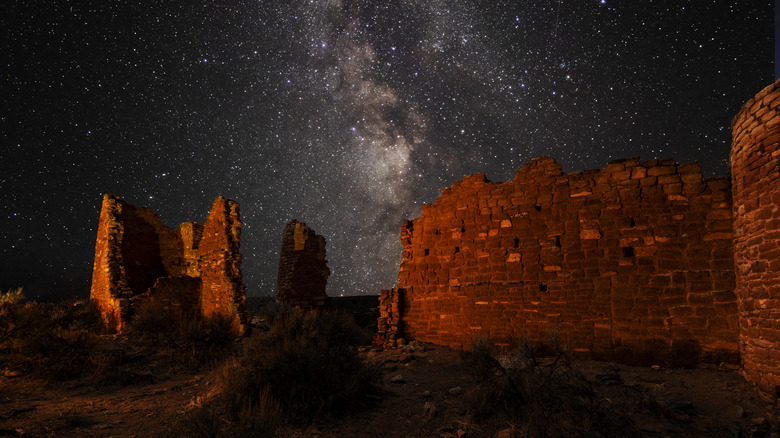Perched On The Colorado-Utah Border Is A Silent City Of Ancient Towers, Hiking Trails, And Scenic Views
The border region between Colorado and Utah may be the most underrated area of the American Southwest. With a perfect blend of the Rockies on one side and rugged deserts on the other, it has some truly awe-inspiring natural features that are sure to delight any would-be photographer or thrill-seeker. The Colorado-Utah border is also home to multiple underrated national park sites, such as the fossil-rich Dinosaur National Monument and its sculpted red-rock Gates of Lodore canyon.
One particularly noteworthy park along the boundary is the underrated Hovenweep National Monument. Though it does not get the attention of nearby sites like Colorado National Monument or Mesa Verde National Park, Hovenweep may be one of the most scenic and significant places in the National Park System.
Located about an hour and a half west of Durango, Colorado, this national monument sits atop the vast and mesa-rich terrain of the Four Corners region. In terms of natural scenery alone, Hovenweep is a worthy entrant in the pantheon of epic Southwestern national park views. However, the site's greatest claim to fame is not the area's natural beauty at all, but rather its extensive archeological treasures. Hovenweep protects some of the best-preserved Ancestral Puebloan structures in the entire Southwest. As a National Park Service site, the monument complements its ancient cities with excellent, scenic hiking trails and a convenient modern infrastructure, all while preserving the glorious landscape surrounding it.
Enter one of the most ancient cities in North America
The remarkable structures adorning Hovenweep's landscape are the handiwork of the Ancestral Puebloan peoples, who lived in the Four Corners region as a farming community between approximately A.D. 300 and 1300. They are most notable today for their extraordinary architectural achievements, leaving distinctive buildings standing throughout the area, such as the cliffside archeological wonders in Colorado's underrated Mesa Verde National Park.
Hovenveep, however, preserves an equally impressive display of Ancestral Puebloan ingenuity. Ironically, the area's name means "deserted valley" in the Ute/Paiute language. This moniker was given to the city upon its rediscovery in the 19th century, at which point it did appear to be little more than a few ruins amid an arid landscape. But a closer examination of the structures reveals a once-thriving agricultural community that was home to as many as 2,500 people at its height.
These buildings are excellent examples of Ancestral Puebloan stone towers, multi-room dwellings, and a central kiva (a rounded gathering space, typically underground, used for ceremonies and political meetings). The monument is divided into distinct "neighborhoods," each with its own notable architectural features. Hovenweep's Square Tower Group is a complex of stone buildings centered around a three-story square tower perched at the edge of a canyon. The larger Holly Group once housed the city's most populous community. The square towers here are notable for their collections of well-preserved petroglyph panels and superb views.
Other units like the Cutthroat Castle, Horseshoe, and Hackberry Groups preserve notable square and circular tower structures around the canyon's drainage basin. Finally, the Cajon Group sits in the most southern and lowest-elevation area of the park, yet (arguably) offers the best views of the surrounding landscape.
Explore the Southwest's natural beauty amid Hovenweep's archeological treasures
Taken alone, the national monument's Ancestral Puebloan villages are enough to make it stand out among the crowded National Park System. However, it also protects a picturesque natural landscape defined by mesas, canyons, and vast desert plains. Like the nearby Dinosaur and Colorado National Monuments, Hovenweep sits atop the rugged Colorado Plateau, at a point where the San Juan River carves a series of intricate canyons in the epic terrain.
Across the horizon, the snow-emblazoned peaks of the Ute and Rocky Mountains only add to the mystique. While this canyon had several practical advantages for an ancient city, one can imagine that the spectacular views were not lost on the Ancestral Puebloans either! This arid landscape may seem like a barren desert, but it's actually a thriving community for more than 300 plant species and multiple ecosystems, including pinyon-juniper forests, shrublands, and wildflowers.
With such superb offerings of both historical and natural treasures, Hovenweep is a true hiker's paradise in the Southwest. All of its designated trails center around the archeological structures, though you'll find no shortage of magnificent landscape views while exploring the ancient villages. Many of the park's more popular trails, like the Square Tower Group Loop and Ruins Trail, are short and scenic hikes of less than 2 miles, while still packing a huge punch in terms of views.
With its ample wildlife, Hovenweep is also a terrific spot for birdwatching, and when the sun sets, the park's remote location offers sublime views of the night sky. Camping is available at the national monument's 31-site campground near the visitor center. For more modern lodging, Colorado's overlooked "canyon country gateway" city of Cortez is only 45 miles away.


